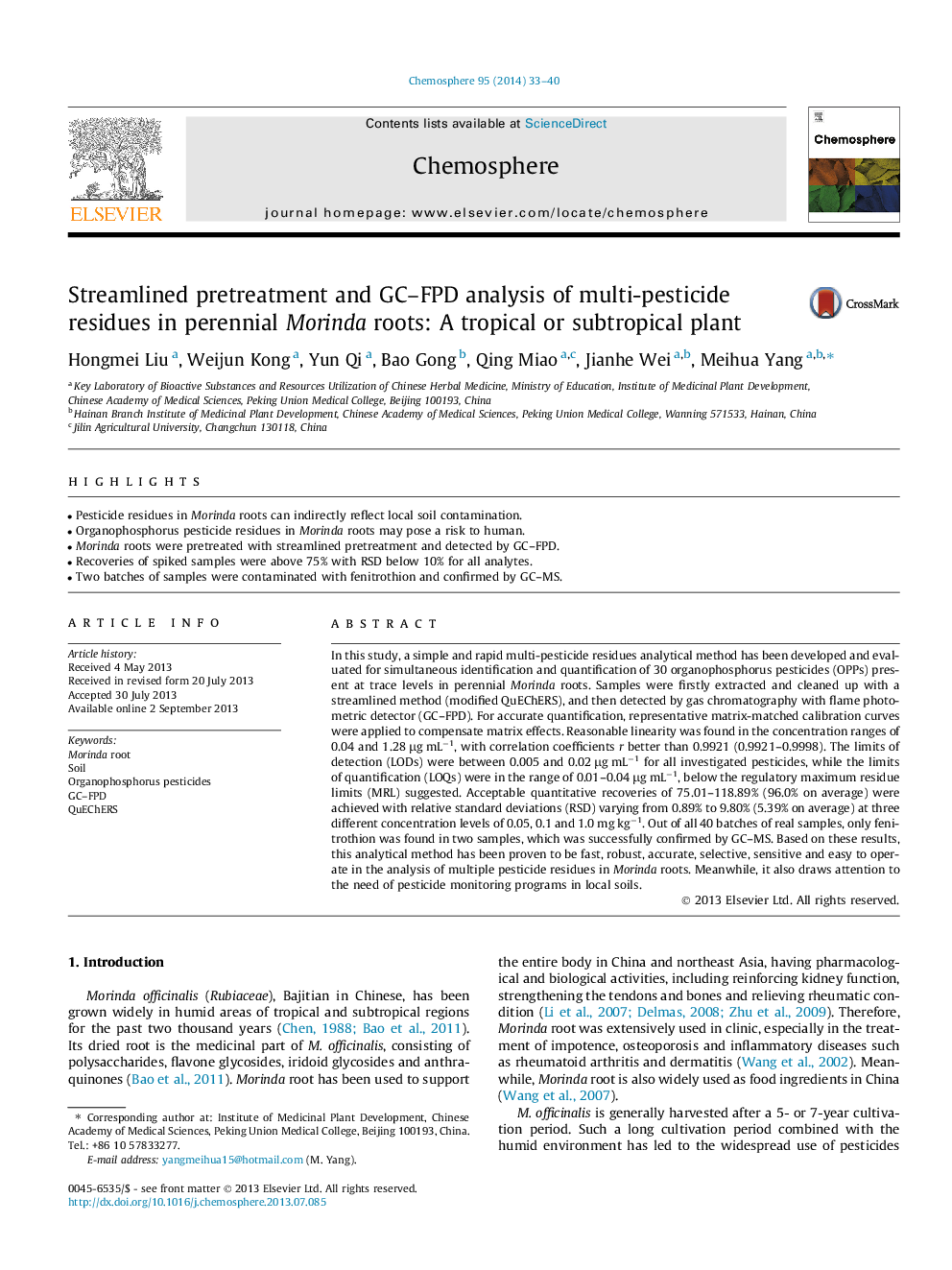| Article ID | Journal | Published Year | Pages | File Type |
|---|---|---|---|---|
| 6309727 | Chemosphere | 2014 | 8 Pages |
Abstract
In this study, a simple and rapid multi-pesticide residues analytical method has been developed and evaluated for simultaneous identification and quantification of 30 organophosphorus pesticides (OPPs) present at trace levels in perennial Morinda roots. Samples were firstly extracted and cleaned up with a streamlined method (modified QuEChERS), and then detected by gas chromatography with flame photometric detector (GC-FPD). For accurate quantification, representative matrix-matched calibration curves were applied to compensate matrix effects. Reasonable linearity was found in the concentration ranges of 0.04 and 1.28 μg mLâ1, with correlation coefficients r better than 0.9921 (0.9921-0.9998). The limits of detection (LODs) were between 0.005 and 0.02 μg mLâ1 for all investigated pesticides, while the limits of quantification (LOQs) were in the range of 0.01-0.04 μg mLâ1, below the regulatory maximum residue limits (MRL) suggested. Acceptable quantitative recoveries of 75.01-118.89% (96.0% on average) were achieved with relative standard deviations (RSD) varying from 0.89% to 9.80% (5.39% on average) at three different concentration levels of 0.05, 0.1 and 1.0 mg kgâ1. Out of all 40 batches of real samples, only fenitrothion was found in two samples, which was successfully confirmed by GC-MS. Based on these results, this analytical method has been proven to be fast, robust, accurate, selective, sensitive and easy to operate in the analysis of multiple pesticide residues in Morinda roots. Meanwhile, it also draws attention to the need of pesticide monitoring programs in local soils.
Related Topics
Life Sciences
Environmental Science
Environmental Chemistry
Authors
Hongmei Liu, Weijun Kong, Yun Qi, Bao Gong, Qing Miao, Jianhe Wei, Meihua Yang,
